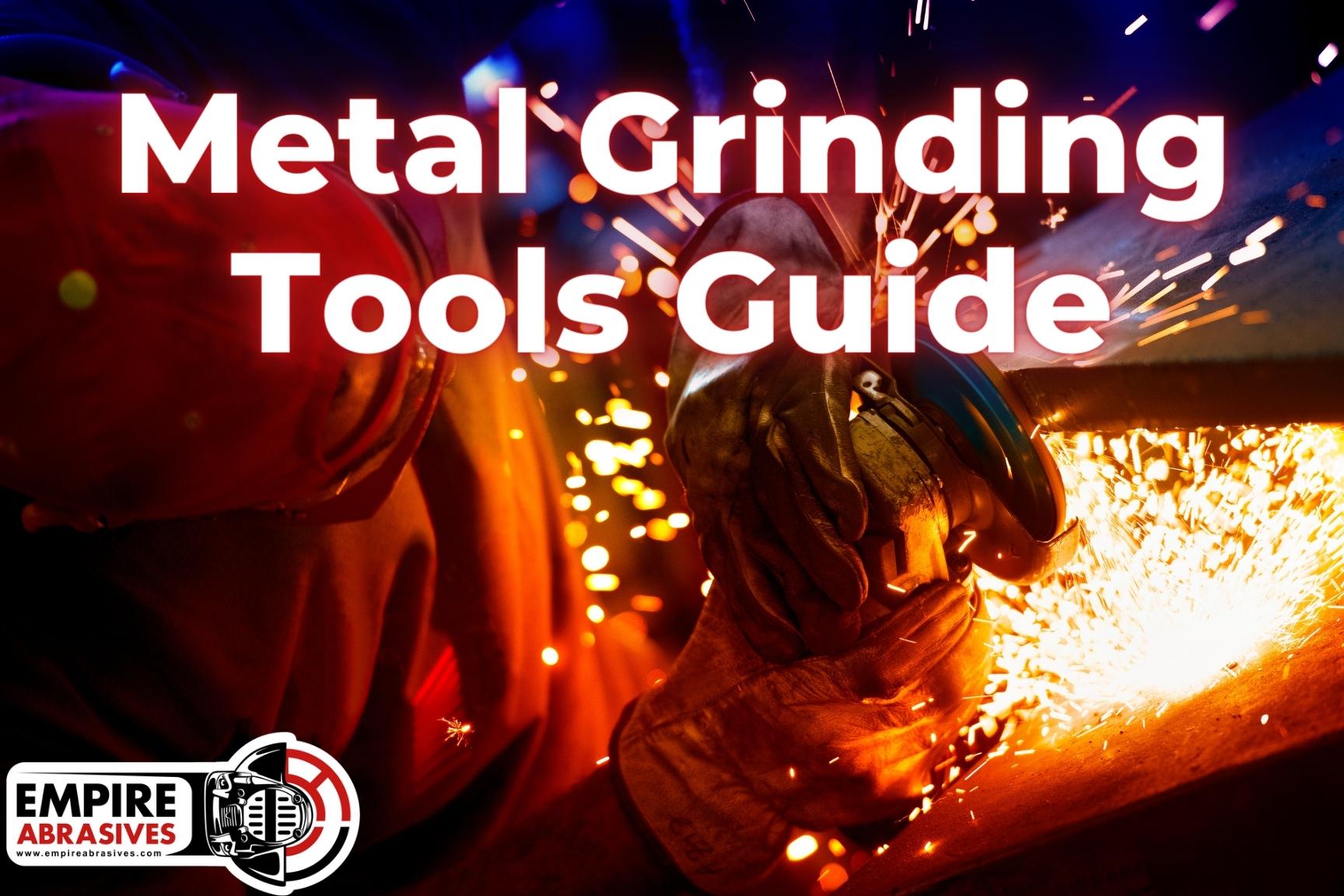
From the auto shop to the professional workshop to the home hobbyist’s basement, metal grinding tools have various applications for metalworkers.
There are many, many types of grinders out there to choose from. There are handheld grinders, like angle grinders, die grinders, linear grinders, and even power drills with the right attachments. Angle grinders, the most popular, grind at an angle, while die grinders can cut or grind but only axially.
Meanwhile, belt grinders and bench grinders are larger benchtop machines that are bigger and stronger and have application in more substantial projects.
In this guide, we consider six of the most common grinding tools, break down how they’re used, give you an idea of the kinds of attachments they might come with, and discuss what to look for if you decide that that tool is the one for you.
Handheld Grinders
Angle Grinder
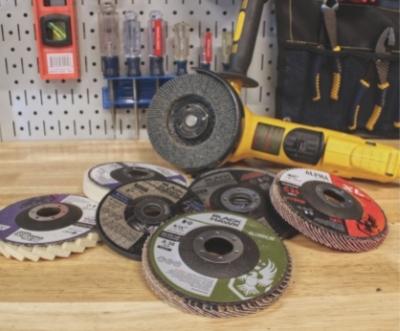
An angle grinder is likely one of the most popular kinds of grinding tools. A handheld tool with many applications. The “angle” part of the name refers to a disc positioned at an angle to the shaft of the power tool. These tools can be electric or pneumatic in energy.
What Are Angle Grinders Used For?
Angle grinders (also known as side grinders or disc grinders) are most often used for grinding and polishing, but their uses extend even beyond. With a disc set at an angle, workshops and auto shops find these tools very useful for removing excess material on a piece.
Utilizing the angle of the disc to smooth down surfaces is a very common application, but these grinders can be used for sanding and cutting as well. They are used in fabrication, construction, and even rescue situations.
Angle Grinder Attachments for Metal Grinding
The angle grinder’s many attachments give it a wide range of usefulness.
- Cut-off wheels. These discs come in a wide array of different materials and sizes to fit any metal-cutting situation.
- Abrasive grinding wheels.
- Sanding discs. A variety of sanding discs are made to fit angle grinders including flap discs, semi-flex discs, resin fiber discs, and surface conditioning discs.
- Wire Brush Wheels. To polish and clean your metal, wire brush wheels work excellently. Though perhaps not as easy to use on a bench grinder, wire brush wheels on angle grinders are a solid metal polishing option.
What to Look for When Buying an Angle Grinder
You must take into consideration what you will use the angle grinder for. Because this tool is useful in both big and small projects, the power of the grinder will differ. Pneumatic angle grinders tend to be stronger, while electric grinders are lighter-duty tools with a smaller upfront cost.
Disc size is also important to consider. You shouldn’t ever use a disc that is too big or too small for your angle grinder.
Beyond these two considerations, there are other considerations like ease of use and ergonomics. You may consider buying a tool with an anti-vibration handle or a moveable side handle that will allow the angle grinder to be used left or right-handed.
Die Grinder
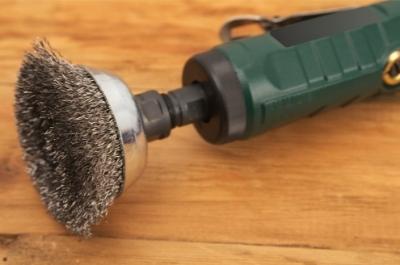
A die grinder is another handheld power tool with a wide range of use in workshops everywhere. They are most often used for grinding, sanding, and polishing material, and their use extends also to subtractive manufacturing (machining—woodworking, metalworking, etc.).
In essence, a die grinder is used to cut or grind material in a variety of ways. It can grind with abrasive stones, machine with a drill bit or burr, hone with fine-grit mounted points, and much more.
Die grinders are sometimes referred to as rotary tools. In fact, there is no actual line in the sand that separates the two tools. That said, the term “die grinder” is typically used to refer to the heavier-duty pneumatic tools, while the term “rotary tool” refers more often to the lighter electric power tools.
What Are Die Grinders Used For?
Die grinders are grinding tools with use in many hobby and commercial applications. They can grind down and smooth out material, but they are also quite handy in woodworking. Cabinetmakers, in particular, will very often call upon the die grinder for use in their work.
Die Grinder Attachments for Metal Grinding
Depending on how you will use it, there are various attachments to consider with the die grinder grinding machine.
- Drill bits.
- Endmills.
- Disc-shaped saw blades. Can be used for cutting material or performing milling operations.
- Mounted flap wheels.
- Spiral Bands.
- Cross Pads.
- Cartridge Rolls.
- Polishing Wheels.
- Quick Change Discs.
- Wire Cup Brushes.
- Wire End Brushes.
What to Look for When Buying a Die Grinder
The first thing to consider when buying a die grinder is what kind of tool you need. A pneumatic tool will be stronger but more expensive, while an electric tool will be cheaper and better for smaller applications.
Linear Grinder
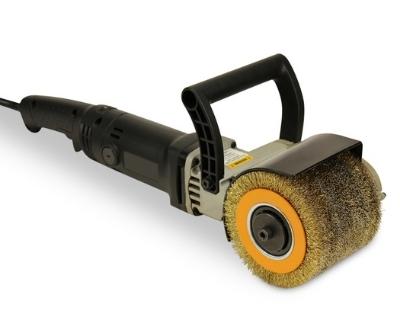
Linear grinders have use in the most common of grinding applications: smoothing out flat surfaces. They go by many names like surface contour tools, surface conditioning tools, andsurfae finishers.
What Are Linear Grinders Used For?
A linear grinder is a handheld grinder that is used to finish metal. The thick sanding drum, rotating quickly, when set against metal and other materials will grind it down and create a smooth surface. These are used by lots of auto body professionals to quickly strip, sand, and prep a car's surface.
Linear Grinder Attachments for Metal Grinding
Linear grinders, though more limited than other grinders, have the following grinding attachments.
What to Look for When Buying a Linear Grinder
This tool is handheld, and as such, there are often practical ergonomic concerns one considers before purchasing one. Some linear grinders come with anti-vibration handles, which in the long run will save your hand and arm a whole lot of stress.
Another important consideration is the size of the project. Linear grinders are small, so their speed of use is limited.
Power Drill
Available in cordless and corded options, the standard power drill found in most people’s toolboxes can be used to grind metal with the right attachments. This workhorse of a power tool allows the user to quickly swap out different tools as they work through a project.
What Are Power Drills Used For?
Power drills have countless uses for everyday projects and commercial jobs. In terms of metal grinding, power drills are most useful when working in small or hard-to-reach spaces and also when your goal is to provide more detailed work to a piece.
Power Drill Attachments for Metal Grinding
There are plenty of power drill attachments that can come in handy when metal grinding. Many of the attachments that fit a die grinder will also work with a power drill with the help of an attachment like a mandrel or backing pad accessory.
- Spiral bands
- Cartridge rolls
- Cross pads
- Wire cup brushes
- Wire end brushes
- Wire wheels
- Mounted flap wheels
What to Look for When Buying a Power Drill
Most useful when it comes to a power drill for metal grinding is that most people already have a power drill in their homes. This means that they don’t have to go out and drop a lot of money on new metal grinders. That said, a power drill’s applications are more limited than with bigger machines.
Also consider if you want a corded power drill or a cordless, pneumatic, or electric. Though a cordless drill is just as handy as a corded one, the battery does need changing. Meanwhile, pneumatic power drills are much stronger than electric ones.
Stationary Grinders
Bench Grinder
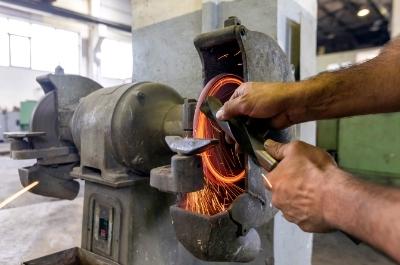
A bench grinder is a benchtop grinder machine that is used for sharpening, cutting, or polishing. Because of its large size, precision work isn’t done on the bench grinder, though it is used to roughly shape metal before welding.
What Are Bench Grinders Used For?
Bench grinders can cut or sharpen tools and do otherwise rough grinding operations. These tools can sharpen cutting tools like drill bits, gouges, and tool bits. In addition, the grinding wheel can be replaced by a wire brush wheel when polishing metal.
Bench Grinder Attachments for Metal Grinding
The bench grinder has essentially two attachments, a grinding wheel and a wire brush wheel.
- Grinding Wheel. Certainly the most common wheel on a bench grinder, the grinding wheel is useful in cutting, grinding, and metal shaping operations. The rotating abrasive wheels make for excellent larger-scale projects.
- Wire Wheels. For polishing, you can replace the grinding wheel with a wire brush wheel.
- Unmounted Flap Wheels.
What to Look for When Buying a Bench Grinder
When considering a bench grinder, you need to consider the kind of material you’ll be grinding down. Hardest is not always better here: though the harder material is more expensive, a grinding wheel suited to grind down a hard metal like steel is not suited for softer materials.
Choosing an appropriate wheel is a matter of safety, as the soft metal can get lodged in the pores of the wheel, causing the wheel to overheat, expand, and potentially crack and injure the operator.
Belt Grinder

Belt grinders are large grinding tools equipped with none other than, you guessed it, a belt. This belt, which can run at any number of angles against your material, is used for finishing surfaces, deburring, and high stock removal. The belt itself is coated in abrasive material that speeds up the finishing process and ensures the longevity of the belt.
What Are Belt Grinders Used For?
Belt grinders have a wide range of variability and, as such, can be used in many situations. When finishing, they can remove micro burrs, make cosmetic finishes on material, and polish. In addition to deburring, they radius and edge break as well. Finally, they are used in stock removal (that is, removal of a large amount of material from another, larger piece of material). They are also one of the most important tools for knifemaking.
Belt Grinder Attachments for Metal Grinding
As far as attachments go, the belt grinder has but one: the belt. The belt, however, is largely variable. Different widths and materials for belts can be used, and each of these sanding belts has a different application. In addition, the belt itself can be repositioned to a variety of angles, making the belt grinder highly useful for all kinds of angle grinding.
What To Look For When Buying a Belt Grinder
A belt grinder is an amazing grinder power tool, but these tools can be extremely expensive. You should be sure if you decide to invest in a belt grinder that you will use it often.
Besides the price, you should be sure of the kind of material you’re going to grind and be sure of what kind of material the belt is made of. The belt should be sturdier than the material in question so that the belt lasts as long as its shelf life will allow.
